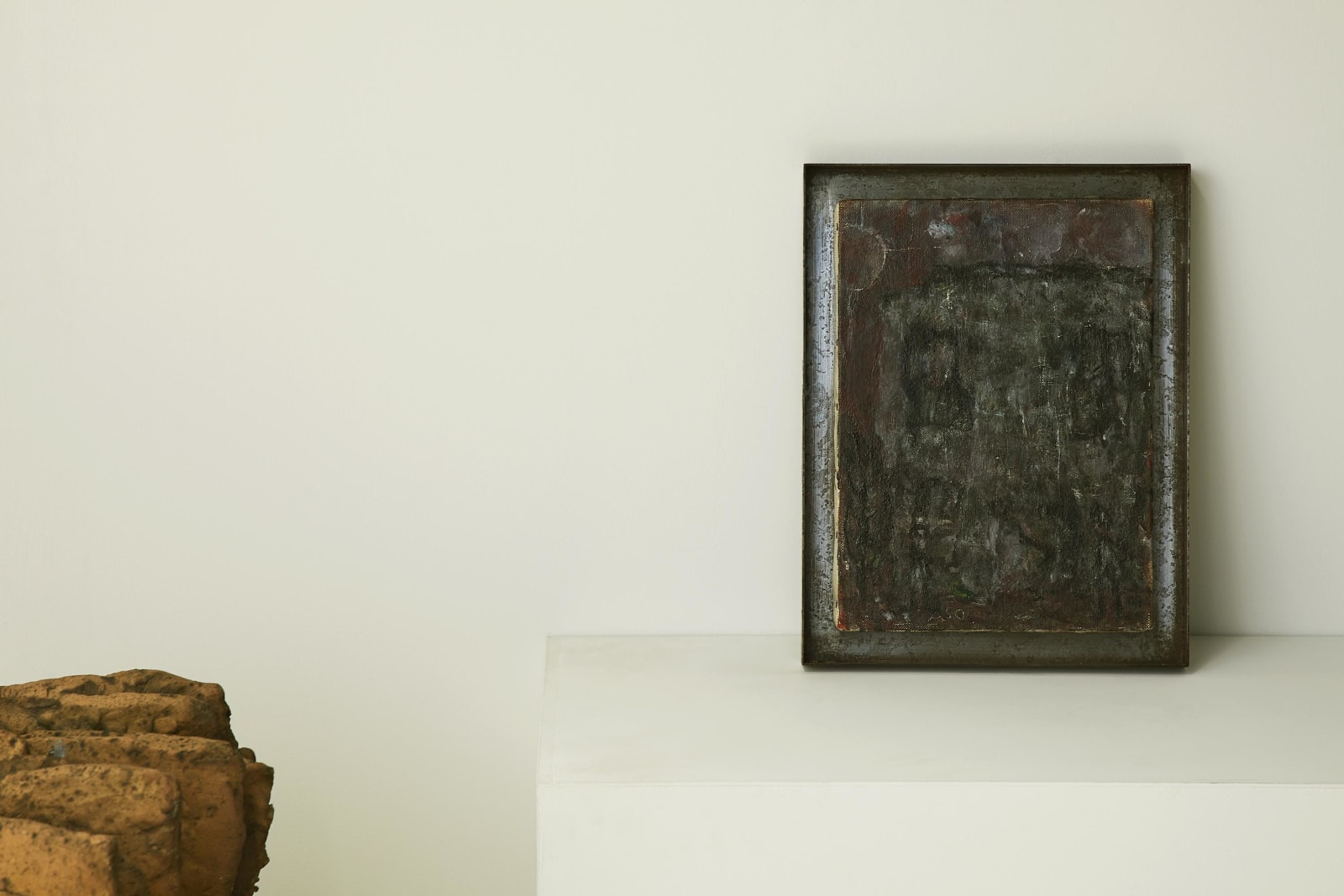Asō Saburō (1913−2000)
Building and Children
Oil on canvas, framed (4F)
1966
Signed by the artist on the back
33.4 x 24.3 cm
39 x 30 cm (overall)
1966
Signed by the artist on the back
33.4 x 24.3 cm
39 x 30 cm (overall)
Further images
Literature
Aso Saburo zen yusai. Tokyo: Chuo Koron Bijutsu Shuppan, 2007.
In the upper left of this painting, the circle suggestive of sun gives off the light, reddening the sky. Speaking of Red Sky, Aso Saburo tried his hand at the very first painting of this series around 1955, and later it became one of his pivotal motifs in the late 1950s. Aso had mentioned that “Red Sky” is on the one hand the sky above the populated city; it was a symbol of the external world that goes uncontrollably decaying itself regardless of humans’ consciousness on the other. He clearly perceived that within it there was a force capable of crushing us, lurked in the thickness of its layers.
In the 1960s, a succession of turbulent social, political, and economic upheavals continued. While keeping aware of the intangible pressure from such situation that Aso called “Red Sky,” he gradually shifted his concerns to the correlation among people, living things, and buildings that exist under such red sky, rather than the sky itself. Aso represents these subjects as mass of layers of gray that is composed of various colors, creating an atmosphere of denseness. Here, it is not the red sky that occupies the center but the building underneath the sky filled with a sophisticated gray. When we carefully observe the details, not only the standing children in front, but also the building, even the surrounding trees stand out as if they are all living beings, moving at their own wills.
Aso Saburo (yoga painter; 1913−2000)
Tokyo-born yoga painter. Studied at Doshu-sha led by Kobayashi Mango at first. Later dropped out of Taiheiyo Art Association and travelled to Europe. Established Bijutsu bunka kyokai and Shinjin gakai. Became a member of Jiyu bijutsu kyokai, and later left and worked independently. Awarded Nihon kokusai bijutsu-ten and received Ministry of Education Award for Fine Arts. Appointed Musashino Art University professor.
In the 1960s, a succession of turbulent social, political, and economic upheavals continued. While keeping aware of the intangible pressure from such situation that Aso called “Red Sky,” he gradually shifted his concerns to the correlation among people, living things, and buildings that exist under such red sky, rather than the sky itself. Aso represents these subjects as mass of layers of gray that is composed of various colors, creating an atmosphere of denseness. Here, it is not the red sky that occupies the center but the building underneath the sky filled with a sophisticated gray. When we carefully observe the details, not only the standing children in front, but also the building, even the surrounding trees stand out as if they are all living beings, moving at their own wills.
Aso Saburo (yoga painter; 1913−2000)
Tokyo-born yoga painter. Studied at Doshu-sha led by Kobayashi Mango at first. Later dropped out of Taiheiyo Art Association and travelled to Europe. Established Bijutsu bunka kyokai and Shinjin gakai. Became a member of Jiyu bijutsu kyokai, and later left and worked independently. Awarded Nihon kokusai bijutsu-ten and received Ministry of Education Award for Fine Arts. Appointed Musashino Art University professor.







